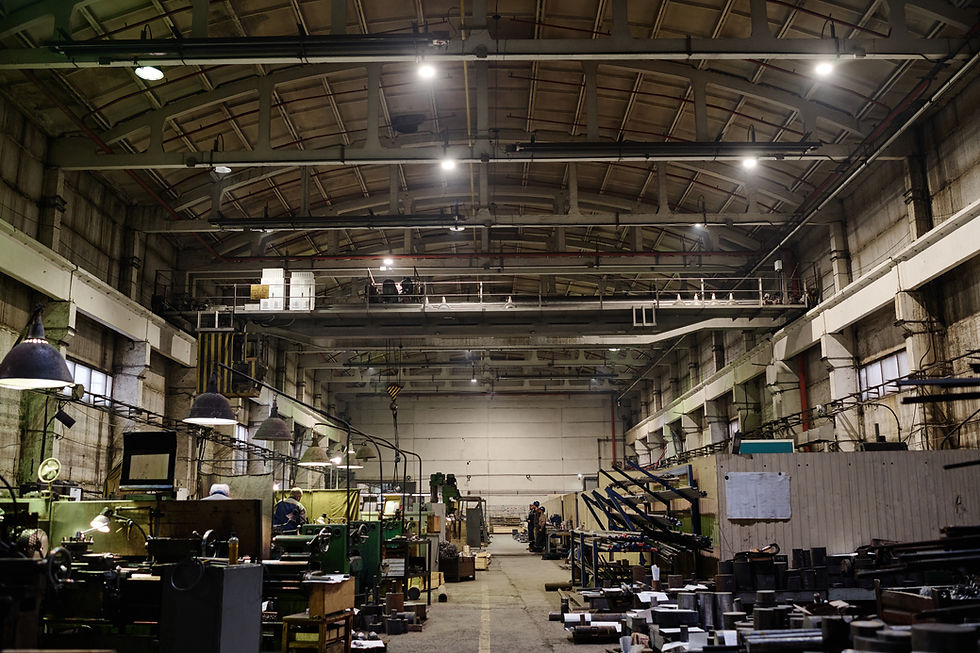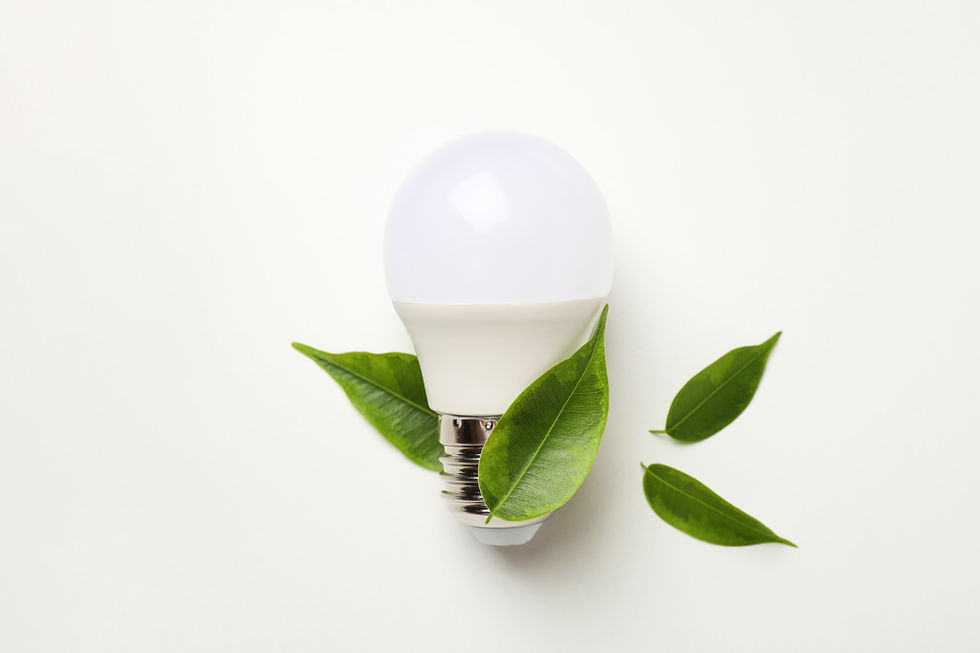Industrial Lighting: A Simple Guide to Getting It Right
- floomarktechnology
- Jul 4
- 3 min read

If you manage or design lighting for a factory, warehouse, or any large-scale industrial space, you know lighting isn’t just about brightness—it’s about performance, safety, and energy savings. In this guide, we’ll walk you through what industrial lighting really means, why it matters, and how to choose the right solution for your space.
What Is Industrial Lighting?
Industrial lighting refers to lighting systems designed specifically for large, demanding environments like manufacturing units, warehouses, and production floors. These spaces usually need brighter lights, tougher fixtures, and energy-efficient performance—far beyond what’s used in homes or offices.
Common Types of Industrial Lighting
Not all industrial lights are the same. The right choice depends on how high your ceilings are, what tasks are being done, and the environment conditions. Here are some common types:
🏭 High Bay Lights
Ideal for large areas with ceilings over 20 feet—such as warehouses or factory floors. These lights deliver strong, focused illumination from above.
🧰 Low Bay Lights
Perfect for slightly lower ceilings (10–20 feet), often used in workshops, storage areas, or loading docks.
💡 Floodlights
Used outdoors or around large open areas, floodlights provide wide, powerful coverage for security or general illumination.
🪛 Linear Lights
These long fixtures are often installed over aisles or assembly lines for even, glare-free lighting.
🚨 Explosion-Proof and Emergency Lighting
Built for hazardous or sensitive environments like oil refineries or chemical plants. These are tough, safe, and often required by regulations.
What to Consider When Choosing Industrial Lighting
Lighting isn’t just about brightness—it’s about performance, safety, and long-term savings. Here’s what to look for:
✔ Brightness (Lumens)
More space means more light. For example, warehouses typically need 20,000 to 100,000+ lumens, depending on layout and ceiling height.
✔ Energy Use
LED lighting is the go-to for most industrial spaces. It uses less power, runs cooler, and lasts longer than older tech like HPS or fluorescents.
✔ Toughness
Look for IP ratings (like IP65 or IP66) to know how well a fixture resists dust, moisture, or heat—especially important in harsh environments.
✔ Compliance & Certifications
Industrial lights should meet safety and efficiency standards like UL, DLC, or local building codes. If you’re in the U.S., OSHA regulations also apply.
Where Is Industrial Lighting Used?
Here are some real-world spaces that rely on specialized lighting every day:
Warehouses – for safe storage and efficient picking
Manufacturing Plants – to support detailed, often high-risk tasks
Cold Storage – where lights must perform well in freezing conditions
Parking Lots & Exteriors – using rugged outdoor floodlights
Food Processing Areas – where hygiene, waterproofing, and color accuracy matter
Why LEDs Are Leading the Way
Switching to LED lighting in industrial settings has become the smart move—and here’s why:
🔋 Saves Energy: Uses up to 75% less power than old tech
🔧 Low Maintenance: LEDs can last over 50,000 hours
🌱 Eco-Friendly: No toxic materials and lower carbon footprint
👷 Improves Safety: Brighter, more uniform light helps prevent workplace accidents
Choosing a Trusted Brand: Why Havells Lighting?
When you need lighting that lasts and performs, Havells Lighting is a name you can trust. With a long history of innovation and quality, Havells offers a full range of industrial lighting products that are energy-efficient, durable, and built for today’s industrial demands.
Why choose Havells?
Top-tier LED technology
Rugged and IP-rated for all conditions
Safety-certified and compliant with global standards
Local support and tailored solutions
Frequently Asked Questions
What’s the difference between commercial and industrial lighting?
Industrial lighting is designed for high-ceiling, high-intensity spaces like factories or warehouses. Commercial lighting typically covers offices, stores, and retail environments.
How many lumens do I need for a warehouse?
This depends on ceiling height and use. Generally, you’ll need 20–50 lumens per square foot. A large warehouse can require over 100,000 total lumens.
Is LED the best choice for industrial settings?
Yes. LEDs are energy-efficient, durable, and perform better in temperature extremes compared to traditional bulbs.
Final Thoughts
Investing in the right industrial lighting isn’t just about illumination—it’s about creating a safer, more efficient space while cutting energy costs. Whether you’re designing a new layout or upgrading an older system, make sure you choose a solution that’s built to last.



Comments